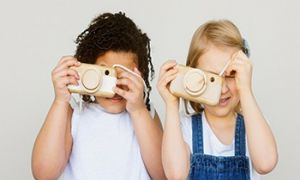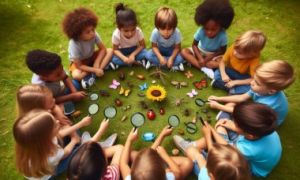The aim of environmental cleaning is to minimise the number of germs to reduce the spread of infection, that survive on surfaces in the education and care service.
For effective cleaning, it is advisable to use warm water when cleaning because this makes it easier to remove dirt from a surface. However, cold water and a little extra scrubbing can also be used to effectively clean a surface.
Basic steps for effective routine cleaning include:
- Use detergent and warm water. Follow the manufacturer’s instructions on how much detergent to use.
- Vigorously rub the surface to physically remove germs.
- Rinse the surface with clean water.
- Dry the surface.
Cleaning Equipment
Appropriate cleaning equipment includes mops with detachable heads (so they can be laundered in a washing machine using hot water), disposable cloths or cloths that can be laundered, and vacuum cleaners fitted with HEPA (high-efficiency particulate air) filters to reduce dust dispersion. Ensure that cleaning equipment is well maintained, cleaned, and stored so it can dry between uses.
It can be useful to have colour-coded cloths or sponges for each area (e.g. blue in the bathroom, yellow in the kitchen) so that it is easier to keep them separate. Wear utility gloves when cleaning and hang them outside to dry. Wash your hands after removing the gloves.
When choosing cleaning products, it is important to consider the product’s effectiveness against germs and the length of time the product must be in contact with a surface to properly clean it.
Special Considerations For Cleaning
Bathrooms and Toilets
- Bathrooms and toilets should be cleaned at least once a day, and more often if they are visibly dirty.
- Ensure that the education and care service has bathrooms and toilets that are appropriate for staff and
- Visitors, as well as children; these, should include appropriate disposal bins for sanitary products.
Nappy Change Area
- After each nappy change, clean the nappy change area thoroughly with detergent and water, rinsing and drying with a single-use paper towel. If faeces or urine spill onto the change table or mat, clean it with detergent and water, then rinse and dry with single-use paper towel.
- If possible, it is useful to have at least two nappy change surfaces for each day. At the end of the morning and at the end of the day, remove the nappy change surface (waterproof sheet or change mat), wash it with warm water and detergent and dry it, preferably in the sun.
Clothing
- Staff clothing or over-clothing should be washed daily with detergent, preferably in hot water. It is recommended that children’s dress-up clothes are washed once a week in hot water and detergent, plus when they are visibly dirty.
Linen
Wash linen in detergent and hot water. Do not carry used linen against your own clothing or coverall— take it to the laundry in a basket, plastic bag or alternative.
Treat soiled linen as you would a soiled nappy, and wear gloves. If washed at the education and care service, soiled linen should be:
- soaked to remove the bulk of the contamination
- washed separately in warm to hot water with detergent
- dried in the sun or on a hot cycle in the clothes dryer.
Cots
If a child soils a crib or cot:
- wash your hands and put on gloves
- clean the child
- remove your gloves
- dress the child and wash the child’s hands and your hands
- put on gloves
- clean the cot
- remove the bulk of the soiling or spill with absorbent paper towels
- place the soiled linen in a plastic-lined, lidded laundry bin
- remove any visible soiling of the cot or mattress by cleaning thoroughly with detergent and water
• remove your gloves and wash your hands
• provide clean linen for the cot.
Dummies
- Never let children share dummies.
- When not in use, dummies should be stored in individual plastic containers labelled with the child’s name. Store dummies out of children’s reach, and do not let the dummies come in contact with another dummy or toy.
Toothbrushes
- Never let children share toothbrushes. Each toothbrush should be labelled with the child’s name. Because bacteria can grow on wet toothbrushes, the bristles should be exposed to the air and allowed to dry after each use—do not let toothbrushes drip on one another.
- Store them out of the reach of children, but do not store them in individual containers, because this stops them from drying.
Toys
Washing toys effectively is very important to reduce the spread of disease.
- Toys need to be washed at the end of each day, especially those in rooms with younger children. Wash toys in warm water and detergent, and rinse them well—many toys can be cleaned in a dishwasher (but not at the same time as dishes). All toys, including cloth toys and books, can be dried by sunlight.
- Only buy washable toys, and discard non-washable toys that are for general use. Individual non-washable toys may be assigned to a child and kept in the child’s cot for the use of that child only.
- Books should be inspected for visible dirt. They can be cleaned by wiping with a moist cloth with detergent on it, and allowing to dry. Keep damp or wet books out of use until they are dry.
- Remove toys for washing during the day. Start a ‘Toys to wash’ box and place toys in it during the day if you see a child sneeze on a toy or put a toy in their mouth, or if the toy has been used by a child who is unwell.
- Toys can also be split into two lots and rotated between washing one day and in use the next.
- In the nappy change area, have a box of clean toys and a box of toys to be washed. Give a child a clean toy if they need one while being changed. Immediately after the nappy change, place the toy in the ‘Toys to wash’ box.
Cushions
- Make sure that all cushions, including large floor cushions, have removable cushion covers that can be changed and washed daily, as well as when they are visibly dirty.
Carpets, mats and curtains
- Carpets and mats should be vacuumed daily and steam cleaned at least every 6 months. Curtains should be washed every 6 months and when they are visibly dirty. Spot clean carpets, mats and curtains if they are visibly dirty in a small area.
Sandpits
Sandpits can be great fun, but they are also a potential source of infection. They need to be well maintained and kept clean.
- Sandpits should be closely covered when the education and care service is unattended, to prevent contamination from animal faeces and protect them from sharp or dangerous objects that are discarded inappropriately, such as broken glass. If the sandpit cannot be covered easily, daily raking and exposure to the sun are advised.
- The sand should be of a depth that can be easily raked over before each use, to help screen for foreign objects.
- Sand that is contaminated by animal or human faeces, blood or other body fluids should be removed.
- Use a shovel and dispose of the sand in a plastic bag or alternative. The remaining sand should be raked over at intervals during the day and left exposed to the sun. Where extensive contamination has occurred, such as through a large spill of body fluids, replace all the sand.
- Adults and children must wash their hands with soap and water or use an alcohol-based hand rub before and after playing in the sandpit.
Celebration cakes and blowing out candles
Many children like to bring a cake to share with their friends on their birthday. Children love to blow out their candles while their friends are singing ‘Happy birthday’. Cakes and candles may also be brought into the education and care service for other special occasions. To prevent the spread of germs when the child blows out the candles, parents should either:
- provide a separate cupcake (with a candle if they wish) for the birthday child and enough cupcakes for all the other children
- provide a separate cupcake (with a candle if they wish) for the birthday child and a large cake that can be cut and shared.
Play dough
Play dough can be great fun. Play dough has a high salt content, which discourages germs from living and multiplying. The following simple steps will reduce the risk of spreading infections when using play dough:
- Children and adults using playdough should wash their hands with soap and water or use an alcohol-based hand rub before and after using play dough.
- Make a new batch of play dough each week and take out enough play dough for each day.
- Store the remaining play dough in an airtight container away from children.
Animals
Animals can be a great source of joy and stimulation for children. However, the mouths and claws of all animals carry germs that can cause infections if a person is bitten or scratched. Animal faeces also carry germs. Some simple measures will minimise the health risk from contact with animals:
- Make sure that adults and children wash their hands with soap and water (or use an alcohol-based hand rub, but only if soap and water are not available) after touching animals, or cleaning an animal’s bedding, cage or tank.
- Ensure that animals are flea-free, worm-free and immunised as appropriate. Animals that are ill should be treated promptly by a veterinarian and kept away from children until the animal is well—an animal that is irritable because of pain or illness is more likely to bite or scratch.
- Supervise children when they have contact with animals. Children should be discouraged from playing with animals while animals are eating. Do not let children put their faces close to animals.
- Do not allow animals in sandpits, and do not allow them to relieve themselves on soil, in pot plants or in vegetable gardens.
- Always wear gloves when handling animal faeces, emptying litter trays and cleaning cages.
- Dispose of animal faeces and litter daily. Place faeces and litter in a plastic bag or alternative, and put it out with the rubbish.
- Pregnant women, in particular, should avoid contact with cat faeces, to minimise their risk of toxoplasmosis
- If you have a birdcage, wet the floor of the cage before cleaning it to avoid inhalation of powdered, dry bird faeces.
- Avoid bringing in or keeping ferrets, turtles, iguanas, lizards or other reptiles, psittacine birds (birds of the parrot family), or any wild or dangerous animals.
Using Disinfectants
- Disinfectants are only necessary if a surface is known to be contaminated with potentially infectious material. Remember, if the surface is not clean, the disinfectants cannot kill germs, so you should always clean first, then (if required) disinfect.
Start the cleaning process in the cleanest areas and finish in the dirtier areas. This method helps to prevent cross-infection because it decreases the risk of contaminating a clean room with germs from a dirty room.
Reference:
Staying Healthy 5th Edition Preventing Infectious Diseases In Early Childhood and Educational and Care Services, National Health and Medical Research Council, June 2013



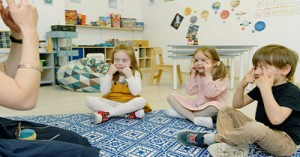
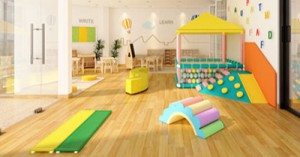

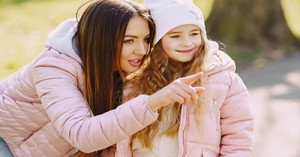
 As an Educator in Australia, your pay rate falls under the Children’s Services Award 2010. This award states the minimum amount that an employer can
As an Educator in Australia, your pay rate falls under the Children’s Services Award 2010. This award states the minimum amount that an employer can When working as a qualified Early Childhood Teacher (with a university degree) within a service, your rate of pay will come from the Educational Services
When working as a qualified Early Childhood Teacher (with a university degree) within a service, your rate of pay will come from the Educational Services When working as a Diploma Qualified Educator your pay rate is from the Children's Services Award 2010. This Award states your minimum rate of pay
When working as a Diploma Qualified Educator your pay rate is from the Children's Services Award 2010. This Award states your minimum rate of pay When working as a Cert 3 Qualified Educator, your pay rate is from the Children's Services Award 2010. This Award states your minimum rate of
When working as a Cert 3 Qualified Educator, your pay rate is from the Children's Services Award 2010. This Award states your minimum rate of Educational Leaders play a crucial role in their early childhood service by ensuring that the educational program aligns with best practices and supports the holistic
Educational Leaders play a crucial role in their early childhood service by ensuring that the educational program aligns with best practices and supports the holistic In early childhood education and care, ratios are more than a technicality—they are a frontline safeguard. Every child deserves responsive supervision, emotional connection, and developmental
In early childhood education and care, ratios are more than a technicality—they are a frontline safeguard. Every child deserves responsive supervision, emotional connection, and developmental Here’s a comprehensive Mobile Phone and Smart Watch Policy tailored for early childhood education and care (ECEC) services in Australia, aligned with the latest 2025
Here’s a comprehensive Mobile Phone and Smart Watch Policy tailored for early childhood education and care (ECEC) services in Australia, aligned with the latest 2025 With the new national child safety reforms kicking in on 1 September 2025, early childhood services like yours have a real opportunity to lead the
With the new national child safety reforms kicking in on 1 September 2025, early childhood services like yours have a real opportunity to lead the The Sea of Fish Challenge is a national initiative that invites children, educators, families, and communities to create and display fish artworks as a symbol
The Sea of Fish Challenge is a national initiative that invites children, educators, families, and communities to create and display fish artworks as a symbol Across the early childhood education and care sector, educators are sounding the alarm: current staffing ratios are insufficient to deliver safe, meaningful, and developmentally appropriate
Across the early childhood education and care sector, educators are sounding the alarm: current staffing ratios are insufficient to deliver safe, meaningful, and developmentally appropriate